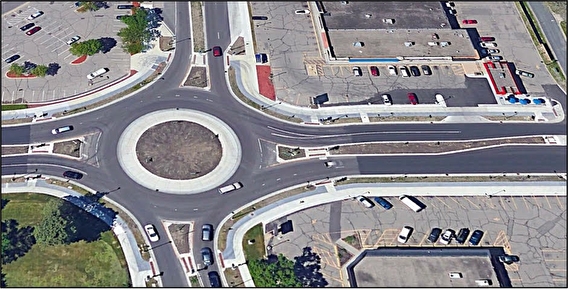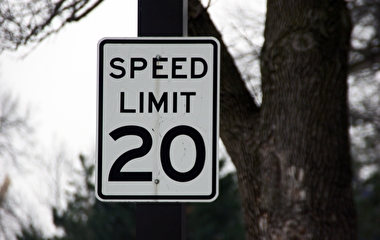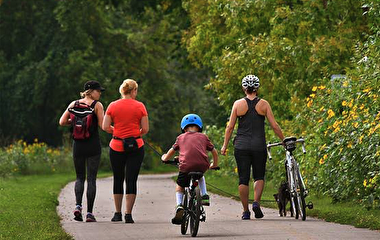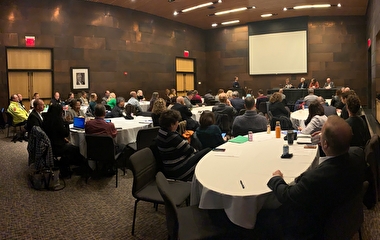
The Complete Streets movement offers transportation practitioners a new way to think about how people move in urban areas, aiming to put alternative transportation on equal footing with motor vehicle traffic. As Complete Streets policies expand across Minnesota, local leaders and policymakers need to better understand how such policies are affecting residents and communities. A case study by U of M researchers of Richfield’s Complete Streets project offers an early look into the potential benefits of this approach.
In 2013, Richfield initiated “Sweet Streets,” a citywide approach to multimodal transportation with a novel commitment to put pedestrian needs before those of motor vehicle users. Notable changes include additional roundabouts, trees to buffer sidewalks from traffic, public art displays, center medians, and improved crosswalk lighting.
“We intend for Sweet Streets to have a citywide, community benefit,” says Jack Broz, City of Richfield transportation engineer. “Our process starts with the pedestrian and looks at features that a pedestrian would want in crossings or walking along.”
To assess the early performance of this initiative, a team led by Professor Zhirong (Jerry) Zhao of the Humphrey School of Public Affairs evaluated the impacts in terms of quality of life and commerce. Over the course of the study (from September 2018 through April 2020), Richfield was building or had recently finished multiple street projects.
Investigators reviewed local reports, news articles, project documentation, and historical images and records, as well as quantitative data from Hennepin County and the U.S. Census Bureau. In addition, they investigated housing prices on or near reconstructed corridors, interviewed dozens of local business owners, and surveyed hundreds of local citizens.
Data suggests that the Sweet Streets projects affect not only residents and businesses adjacent to reconstructed roadways, but also those living nearby. The team also reported that transportation travel times may have fallen citywide. Additional study findings were grouped into four categories:
- User experience and livability: Researchers found that residents were still adjusting to the changes (particularly the roundabouts) and no significant impact on home sales or prices was yet evident.
- Economic vitality: Businesses indicated lower revenues during construction and uncertainty about future impacts; however, business owners believed that streets were more attractive and could trigger additional investment.
- Individual and community health: New bike facilities (which had just opened at the time of the surveys) showed little impact on commuting or recreational cycling, though many survey respondents indicated an interest in future use.
- Transportation and safety: Users recognized safety improvement from changes like slower traffic and marked pedestrian crossings. But there were also new safety concerns, such as pedestrian access and bicyclist safety where residential sidewalks were replaced with bike lanes along parking lots. Visibility and crossing safety at roundabouts were also a concern.
“Our research gives us a strong understanding of the community’s early response to Sweet Streets and identifies measures to track in the future,” Zhao says. “This is an important step toward understanding Complete Streets designs and how they should be conducted. It demonstrates how impacts are felt not just on rebuilt streets, but also by people living nearby.”
The project was funded by the Minnesota Local Road Research Board.
Writer: Megan Tsai


